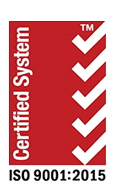Increased Weld Strength in Low Density Tantalum Anodes: Compaction at the weld area only, without reducing performance by compacting the entire pellet.
Component InterTechnologies began welding pressed tantalum anodes for the capacitor industry in 1980. Since this time CIT has developed and sold hundreds of welding machines for this application. As the demand for more performance volume per capacitance increased, less and less dense powders are being welded to the riser wire. At some densities the compressed pellet to anode wire weld is not strong enough to withstand the rigor of the manufacturing process.
To address this problem the pellet needs to be compacted at the weld area only, without compacting the entire pellet as that would reduce performance. This compacting process needs to be done in a localized area and at production speeds (12000 pph).
Component InterTechnologies designed a completely new pellet feeding welding system which incorporates a carbide tool for the compacting of a very small area of the pellet that the anode wire is welded into. This provides a more dense area that, when the wire is welded into, is much stronger and will withstand the rigors of later manufacturing process.
This system is an extension of the 7200 welder capability and is built as a unit and incorporated into the basic machine.
The system is built using a precision-controlled index wheel, a linear pellet feed track and escapement, a pneumatic motorized indenting mechanism and a cam-operated welding contact and jaw opening system. There is also an electrically operated sorting mechanism for discrepant welded parts.
The process starts with pressed pellets being placed in a stainless steel feed bowl. They are then propelled along the feed track using air to position them for loading into the index wheel. When the index wheel is in position, a cam-operated jaw opening device both opens the index wheel jaw and releases a pellet into the jaw. The index wheel now moves to the next station where a motor-driven carbide tool is pressed into the tantalum pellet, indenting the pellet.
The next index positions the indented pellet in line with the wire weld jaw while flowing Argon gas over the weld area. This weld jaw brings a cut piece of tantalum wire in contact with the pellet indentation and the resistance weld is triggered. At the next 2 index positions, a visual inspection can be completed. At the final index position, a cam-operated jaw opening device releases the welded pellet assembly using air to eject the pellet. If a vision sorting system is used the failed pellet is ejected at this time.
This system can be applied to nearly any pellet size by changing the index wheel and sub plate. All parameters used in the manufacture of welded tantalum pellet anodes are fully adjustable using micrometer controlled positioning.


Comments are closed.